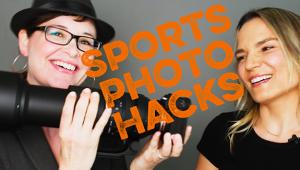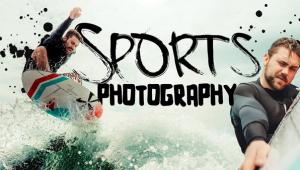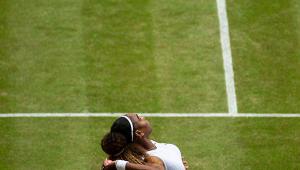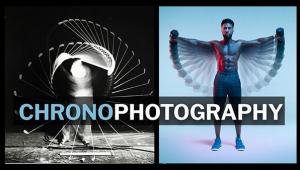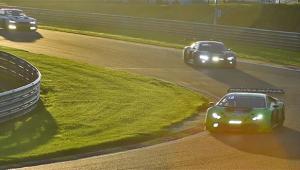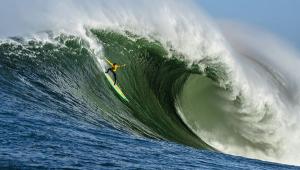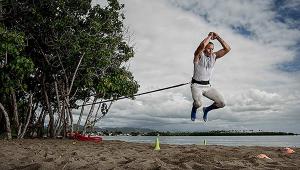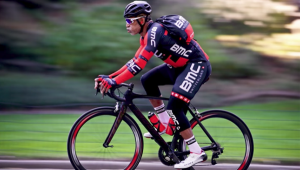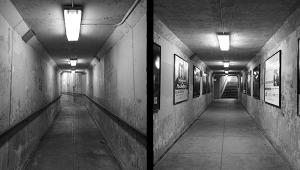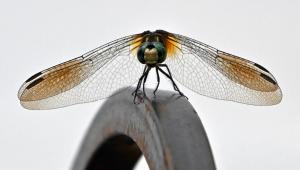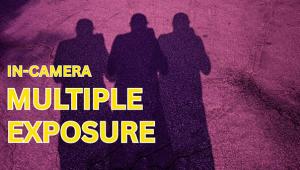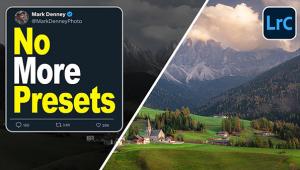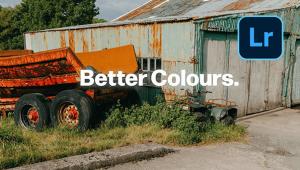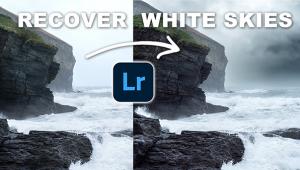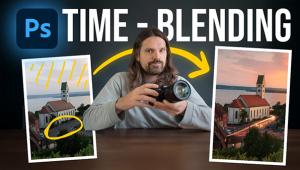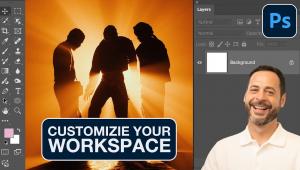Tackling Football Photography: Peter Read Miller Shows Us How To Score With The Camera
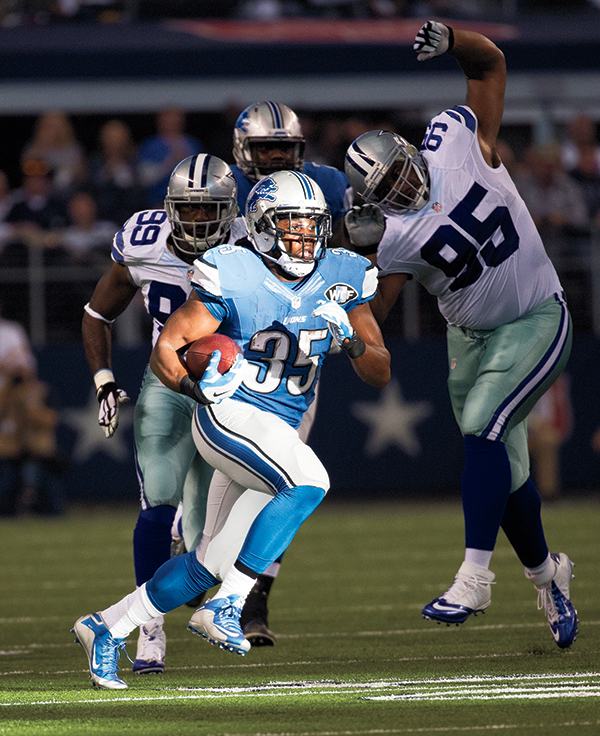
This was a playoff game, in the 2014-2015 season. “What’s unique about this picture is that it’s shot at AT&T Stadium (formerly Cowboys Stadium), which has 100-foot-high windows at the ends of the stadium. If you’re there at the right time of day, you get shafts of light (which in this shot highlighted the key player).” Technical info: Canon EOS-1D X, 200-400mm f/4L; ISO 3200, f/4, 1/1600 second.
All Photos © Peter Read Miller
For a sports photographer, the thrill of the game is superseded only by the thrill of capturing that peak moment of action. For the uninitiated, photographing a sport—especially football—can be intimidating and certainly challenging. Hit-or-miss, in fact. But not to a seasoned pro like Peter Read Miller. This illustrious Sports Illustrated photographer, who now largely shoots for commercial clients, shares with us his experience and knowledge of how to shoot the game of football.
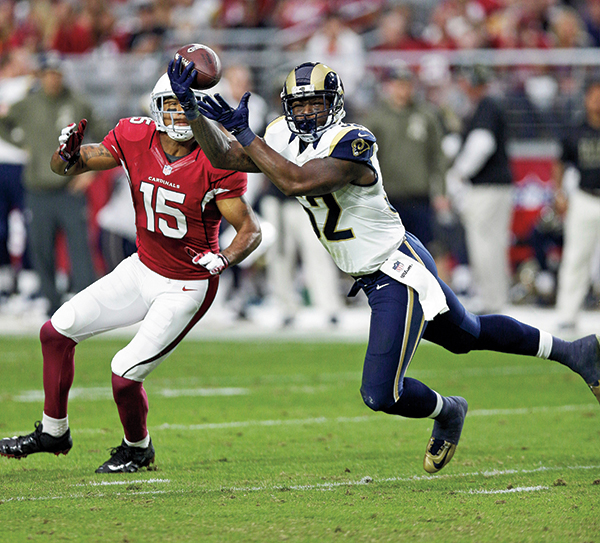
This play, at University of Phoenix Stadium, is an interception. “The point of the shot is that it’s captured from behind the line of scrimmage, which affords you a better chance to show faces and action, in terms of the passing game.” Technical info: Canon EOS-1D X; ISO 2000, f/2.8, 1/1600 second.
Think Before You Shoot
As a professional sports photographer, Miller notes that he shoots football completely different for his commercial clients than for his editorial clients, such as SI. For example, he says capturing the game-winning touchdown may not be the primary objective to a commercial client.
“Now I shoot for all the NFL sponsors,” Miller explained. “That is very directed. I get hit lists of players, I get shots that they want. With magazines, it was more like, cover the game. For Sports Illustrated, AP, Getty—it’s, get the winning play, get the action, get the MVP.
“My specific assignment nowadays may be to cover one guy for the whole game. I went to Detroit this last December, and my assignment from Nike was to cover Calvin Johnson, one of the best wide receivers in the NFL, from the moment he stepped on the field to the moment he stepped off (‘we want to see everything he does, every play he runs’).
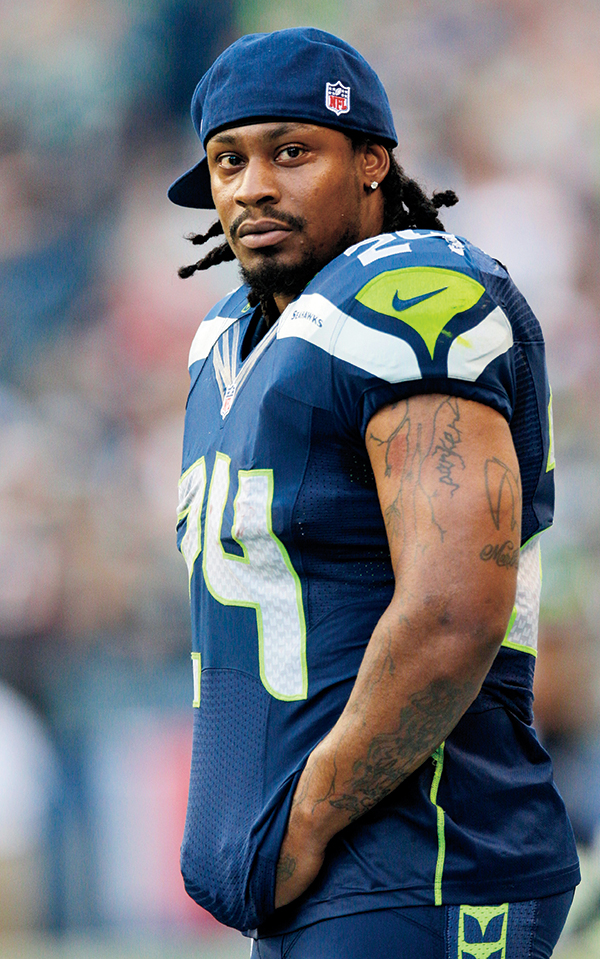
“Even when you cover a game editorially, it’s important to look away from the action. This player wears a tinted visor during play, so other than shooting a candid portrait, there would be no way to make that critical eye contact with him in a photograph.” Technical info: Canon EOS-1D X; ISO 3200, f/4, 1/1000 second.
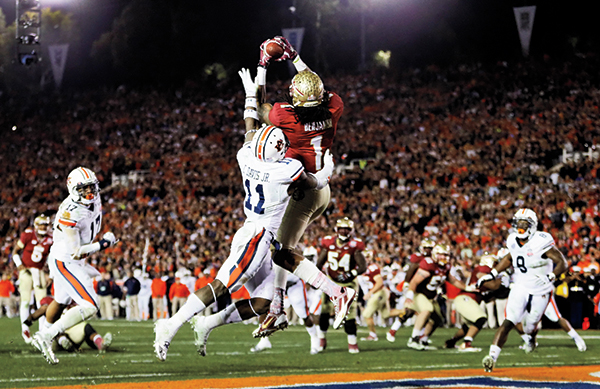
“I used the lens at 70mm here because the play was practically in my face.” This focal length allowed Miller to not only capture the winning play but, by not shooting tight, to also show the sense of disappointment in the faces of the losing team. Technical info: Canon EOS-1D X, 70-200mm f/2.8L; ISO 3200, f/2.8, 1/2000 second.
“The only problem is, they don’t necessarily throw to him for every play, but you still have to stay on top of him. Or another assignment may focus on a product in use. For instance, Microsoft wanted to see their Surface tablets in use by team members on the bench. My job for several games last season was simply to document the use of those tablets, so I would hang around the bench and shoot their product.”
Or in other words, the assignments might not always be glitz and glamour, but it still keeps you in the game so you keep getting paid.
“That’s not to say that I don’t get to shoot the game these days. I just shoot it from a different perspective, following what the client wants to see. The SI idea was to get whatever comes your way, in your assigned position in the stadium. On commercial assignment at the most recent Super Bowl, I was free to move around. So, whenever either the Seahawks or the Patriots had the ball, I had to figure that the team that had possession had the potential to score. That kept me on the move each time the ball changed hands. The good thing about the Super Bowl is that there are so many commercials that you have time to move around, as long as you were quick about it.”
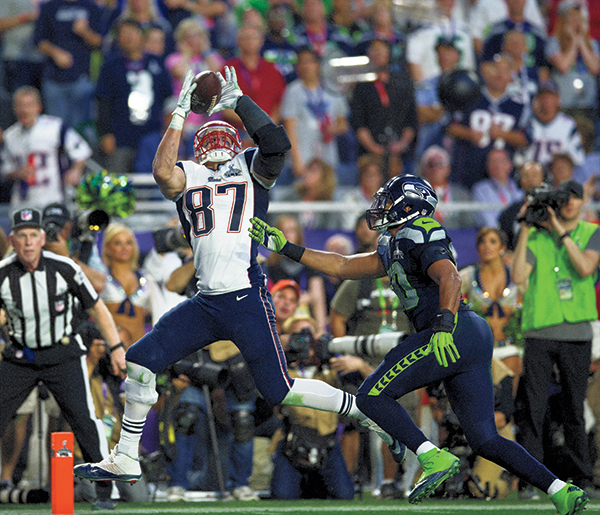
This is Rob Gronkowski, tight end for the New England Patriots, making a catch for a touchdown at Super Bowl XLIX (2015). “I was on the other side of the field shooting with a 400. I like the moment where the ball is just entering the receiver’s hands.” Technical info: Canon EOS-1D X, 400mm f/2.8L; ISO 2000, f/2.8, 1/1600 second.

“I love it when you get two players off the ground. That’s a cool moment.” Technical info: Canon EOS 7D Mark II, 400mm f/2.8L; ISO 4000, f/2.8, 1/2500 second.
Gearing Up
Miller’s approach to what gear he brings to shoot the game has changed, too.
“When I had an assistant, I was able to juggle two cameras each mounted to a monopod. It’s a little different now. Today I’ve got one long lens, either the Canon 200-400mm zoom or the 400mm f/2.8 mounted to a monopod; I usually have a second camera, this one with a 24-70mm lens, around my neck; and then a third camera with a 70-200mm glass that I’ll carry over my shoulder.
“Sometimes I’ll only carry the 200-400 and 24-70. It’s a battle with how much abuse you want your body to take versus how many pictures you want to get. But whatever I attach to the monopod stays on the monopod. I don’t switch cameras during a game.”
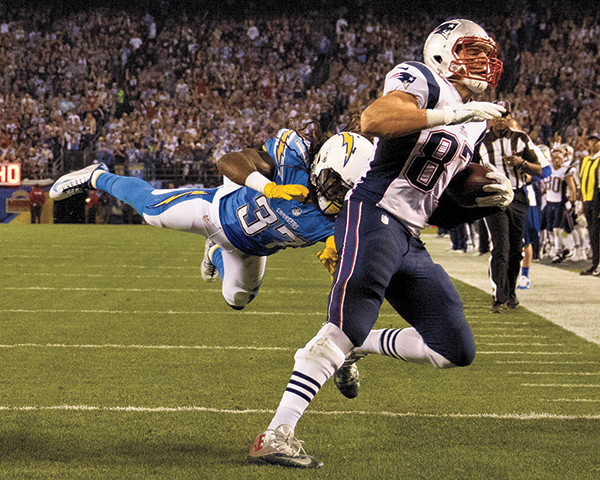
“Gronkowski (Patriots) had made a catch for a touchdown, but the opposition was resolute on taking him down and making him pay for that.” Technical info: Canon EOS 7D Mark II, 24-70mm f/2.8L; ISO 3200, f/2.8, 1/2000 second.
Choosing Lenses
Sometimes Miller has to make hard choices: to go with the 400mm f/2.8 and add the Canon EF 1.4x III Extender or use the 200-400mm f/4 with the built-in 1.4x extender. “You can shoot any NFL stadium at night at f/4, at worst at ISO 3200 to 4000. But if you want to go longer with the 200-400, the built-in extender will bring you to f/5.6. That means going to ISO 6400 or higher, which is a little more than I like to go when shooting for commercial clients. The picture is a little different when it’s for editorial use.
“At the Super Bowl, they had the roof open at University of Phoenix Stadium. It was a 5 o’clock start and the light at the time was beautiful. But about 10 minutes before the start of the game, I started to recall how dark it gets in there. What’s more, and despite being able to move around, you can’t always be where you want to be, so it’s nice to have that extra reach. So I went back to the press room and switched out my long lenses, opting for the 400 f/2.8 with extender.”
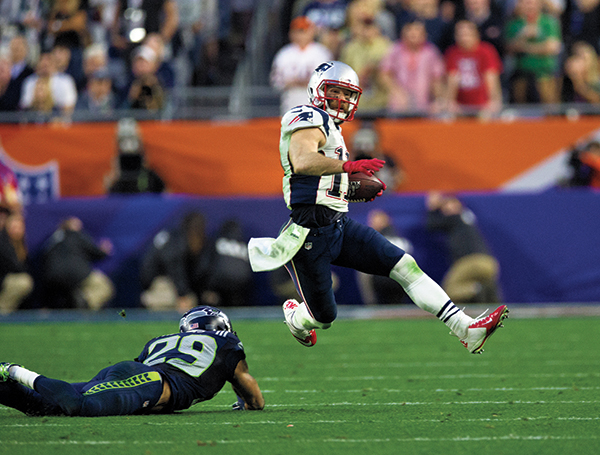
Again, the Super Bowl. “What I like about this shot is the motion of the wide receiver as he flies through the air and dodges the tackle.” Technical info: Canon EOS-1D X, 400mm f/2.8L + 1.4x; ISO 4000, f/4, 1/1600 second.
Knowledge Is Power
No amount of gear will guarantee you get the shot. The gear is only a first step.
“In football, the key is, the more knowledge you have about the game, and more specifically about the teams and the players that you’re shooting, the better off you are. You’re not going to figure out every play—offensive and defensive coordinators are paid to outthink the rest of us. But certainly tendencies are important—knowing what people do and what you can expect them to do is the real key to it all.”
Still, how do you capture those telling moments when you don’t know exactly where the key play is going to be?
“Well, you start with the quarterback and most times he gets the ball, unless they do a wildcat formation, where he doesn’t. At this point, he’ll do one of two things. He may fake you—and I have plenty of pictures where he’s done that. But basically he’s either going to hand off to a running back, or he’s going to pass. When it looks pretty clear that he’s going to pass, you’ve got to have a sense of where people are on the field and who are his go-to guys. Then you back off a little with the zoom or scan the field a bit and try and get an idea of where he’s going to throw the ball.”
How to Take Great Football Photos
These tips are taken from Peter Read Miller on Sports Photography. The book is a must-read—entertaining, authoritatively written, and beautifully illustrated. These tips will come in handy for photographing other sports as well, which are also covered in the book.
* Eye contact and facial expressions humanize the players. Show that you can visually connect with the action.
* Because you’re trying to capture facial expressions, watch that the helmet, faceguard, and, in the case of a quarterback, non-throwing arm don’t block the eyes or cast a shadow on his face.
* Toward that end, don’t feel locked into one position—move around to where the lighting is best. Shooting from behind the line of scrimmage is often advantageous.
* You can shoot the “bubblegum card” type of shot focusing on a single player in action, but it’s best to create a sense of depth by showing two or more players in relation to each other.
* Aim at capturing a peak moment in play.
* Include the ball in the frame, for most shots, so your pictures don’t look hit-or-miss.
* Don’t cut off hands, arms, feet, legs, or helmets of key players involved in a play.
* Use the AF button (on back of the camera) to focus, while holding down the shutter button so you can quickly and positively respond to the action.
* Use cross-type focusing points and don’t just limit yourself to the central point (unless you don’t have a choice).
* Shoot at or near maximum aperture (this assumes you have fast lenses) for shallow depth of field.
* Use fast shutter speeds, which range from 1/2000 second or higher with daylight or just below that for a night game—essentially, the faster the better. Use the ISO that will deliver these exposures.
* Shoot in aperture priority outdoors, manual (keeping an eye on the histogram) at night and indoors.
What’s In Miller’s Gear Bag
* Think Tank Photo Airport Addicted roller bag
* Three Canon EOS-1D X bodies
* Canon EF 24-70mm f/2.8L Series II
* Canon EF 70-200mm f/2.8L IS Series II
* Canon EF 200-400mm f/4L IS with built-in 1.4x Extender
* HoodLoupe 3-inch Glare Free LCD Loupe
* Canon Angle Finder C (for shots taken from ground level)
* Eight to 10 Lexar and Hoodman 1000x CF cards 16GB and 32GB
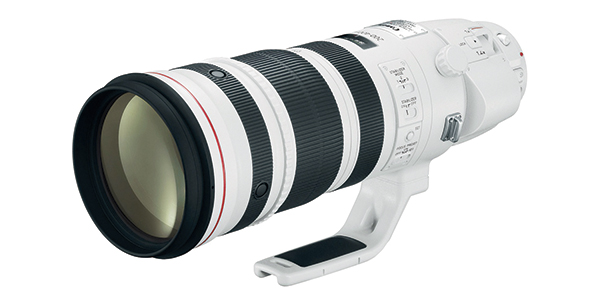
His Favorite Tool
“The Canon 200-400mm f/4L IS lens with built-in 1.4 Extender is my new favorite lens for action sports,” Miller says. “It’s super sharp, has incredibly fast autofocus, and the focal length range of 200 to 560mm allows me perfect framing no matter where I am at the event or on the field. I used it almost every day at the London Olympics and it has become my go-to lens for football.”
To see more of Peter Read Miller’s work, visit www.peterreadmiller.com, where you’ll also find information on his workshops and his book, Peter Read Miller on Sports Photography.


